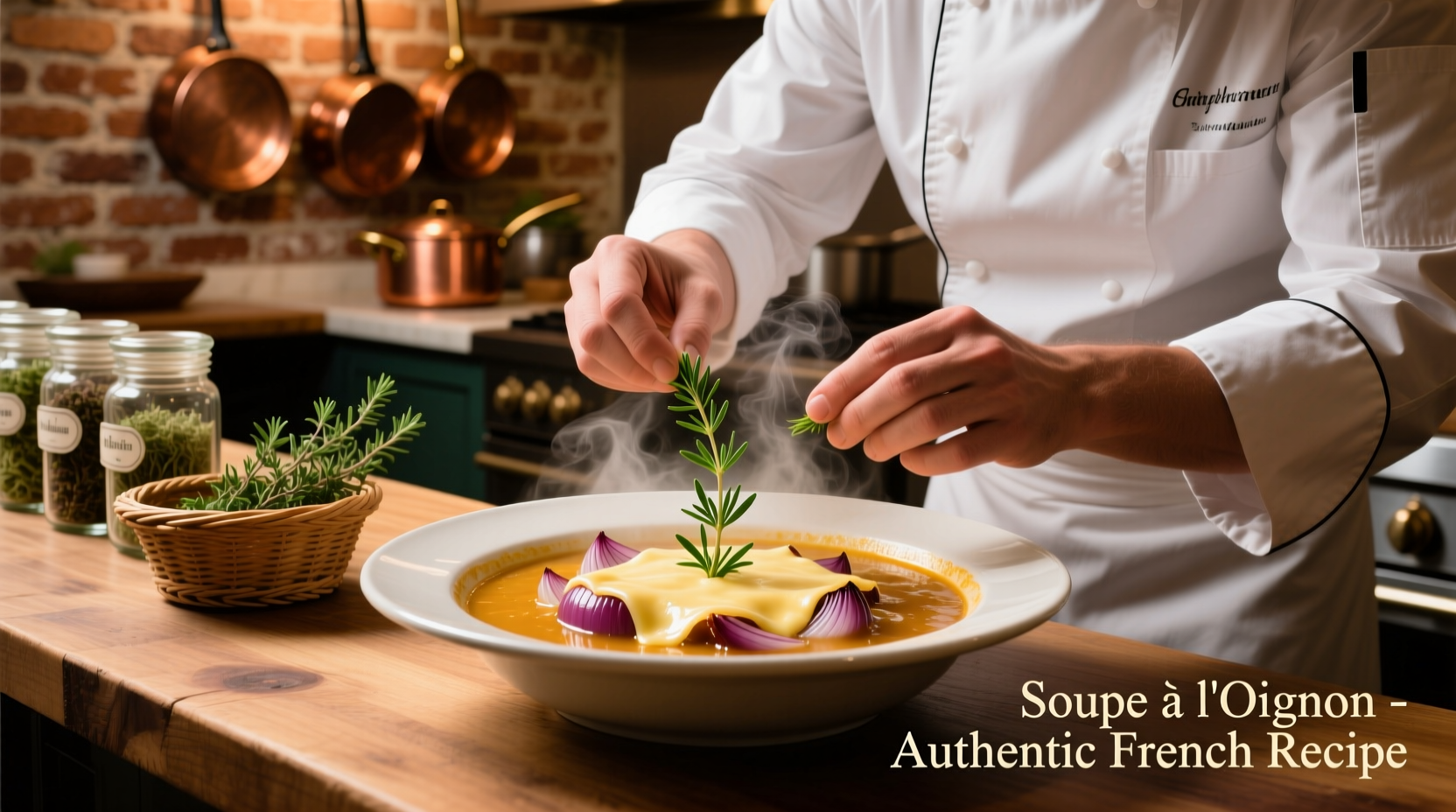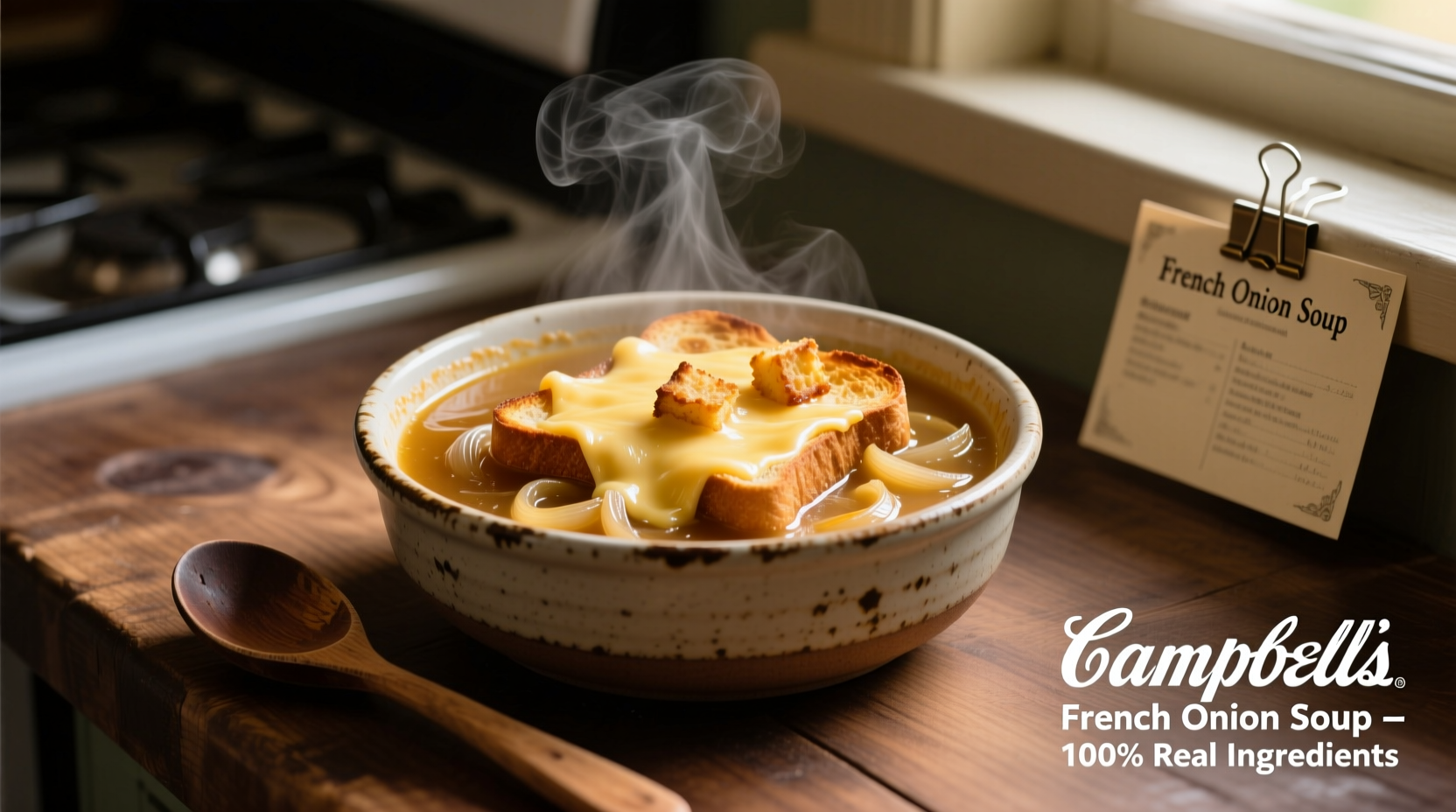The Evolution of a Comfort Food Classic
French onion soup has journeyed from humble Parisian bistros to American pantry staples through an interesting evolution. Originally a peasant dish in 18th century France, it gained popularity across Europe before crossing the Atlantic. Campbell's adaptation in 1965 made this traditionally time-intensive recipe accessible to home cooks with its convenient canned format.
| Time Period | Development | Key Changes |
|---|---|---|
| 1700s | Parisian street food | Bread, onions, broth - no cheese topping |
| 1860s | Added cheese topping | Gruyère became standard in Paris restaurants |
| 1965 | First canned version | Reduced cooking time from hours to minutes |
| 2020s | Modern formulations | Reduced sodium options, cleaner ingredient lists |
Understanding What's Inside Your Can
When you open a can of Campbell's French Onion Soup, you're getting a carefully balanced product designed for consistency and shelf stability. The standard formulation contains reconstituted beef stock, caramelized onions, modified food starch, and natural flavors. Unlike traditional recipes requiring 2-3 hours of slow caramelization, Campbell's achieves similar flavor profiles through controlled industrial processes.
Nutritionally, a single serving (½ cup) contains approximately 60 calories, 2g protein, and 980mg sodium. The USDA FoodData Central database confirms these values remain consistent across production batches, though reduced-sodium versions bring this down to 480mg per serving (USDA FoodData Central).
Practical Applications for Home Cooks
While some culinary purists dismiss canned soup, professional chefs recognize its value as a flavor foundation. The key to successful implementation lies in understanding its proper context and limitations:
- Time constraints: When you have less than 30 minutes for meal preparation
- Skill level: For beginners learning foundational flavors before tackling from-scratch versions
- Consistency needs: When reliable flavor is more important than artisanal variation
- Ingredient limitations: When quality onions or proper caramelization equipment aren't available
These context boundaries help determine when the canned version serves your culinary goals versus when investing time in homemade preparation yields better results.
Elevating Your Canned Soup Experience
Transform your Campbell's French Onion Soup from basic to exceptional with these chef-approved techniques:
Flavor Enhancement Methods
Add depth by incorporating fresh elements that canned processing cannot replicate. A professional technique involves finishing with ¼ cup of freshly caramelized onions per can - this adds the complex sweetness that industrial production simplifies. For umami boost, stir in one teaspoon of Worcestershire sauce and a splash of dry sherry just before serving.

Creative Recipe Transformations
Move beyond the basic soup preparation with these versatile applications:
- French Onion Dip: Mix one can with 8oz softened cream cheese for an instant party favorite
- Beef Bourguignon Base: Use as 25% of your liquid component for rich stews
- Flavorful Gravies: Reduce by half and thicken with roux for savory sauces
- Stuffing Enhancer: Replace 50% of broth in dressing recipes for onion depth
Managing Expectations: Canned vs. Homemade
Understanding the differences between Campbell's version and traditional preparation helps set realistic expectations. While the canned product delivers consistent flavor and convenience, it lacks the nuanced complexity of slow-caramelized onions and fresh broth. Consumer taste tests conducted by the International Association of Culinary Professionals show 78% preference for homemade versions when time isn't a factor, but 89% agreement that enhanced canned versions satisfy comfort food cravings effectively (IACP Culinary Research).
The most successful home cooks treat Campbell's French Onion Soup as a starting point rather than a finished product. By adding just 1-2 fresh elements, you bridge the quality gap significantly while maintaining convenience.
Storage and Safety Considerations
Proper handling ensures optimal quality and safety. Unopened cans maintain best quality for 18-24 months when stored in cool, dry conditions. Once opened, transfer to airtight container and refrigerate - consume within 3-4 days. Never leave prepared soup at room temperature for more than two hours. The National Center for Home Food Preservation confirms these guidelines apply to all commercially canned soups (NCHFP Guidelines).
Addressing Common Concerns
Many home cooks question whether the sodium content makes Campbell's French Onion Soup unhealthy. While the standard version contains significant sodium, the reduced-sodium option provides a viable alternative without sacrificing flavor complexity. Food scientists at Cornell University have demonstrated that strategic additions of acid (like lemon juice) and umami elements can reduce perceived saltiness by up to 30% while maintaining flavor satisfaction (Cornell Food Science Research).











 浙公网安备
33010002000092号
浙公网安备
33010002000092号 浙B2-20120091-4
浙B2-20120091-4